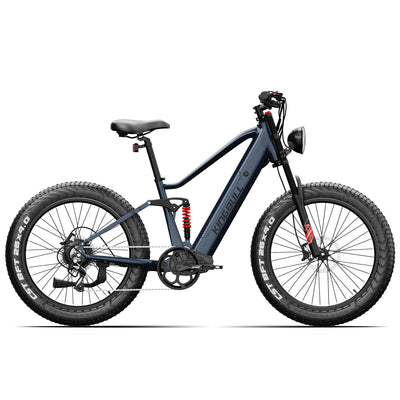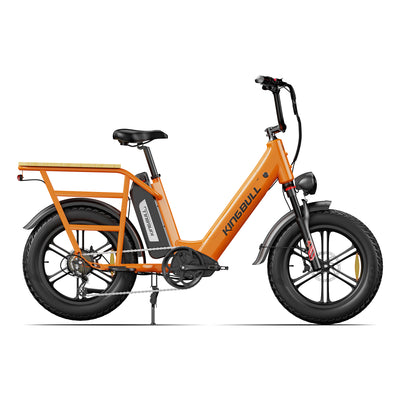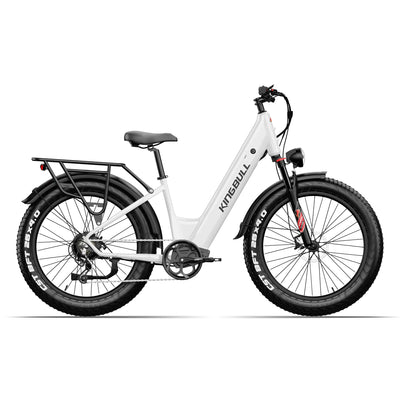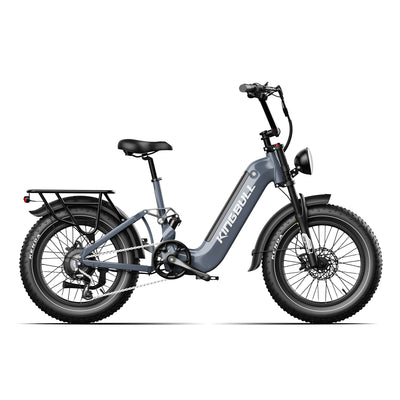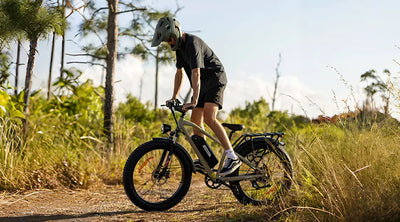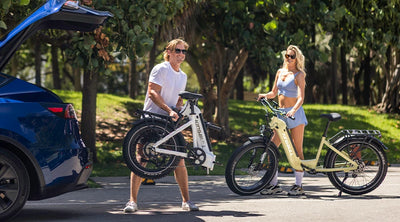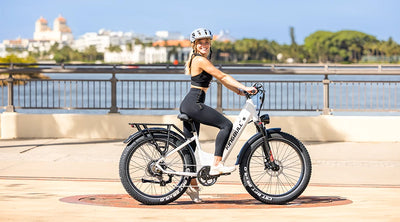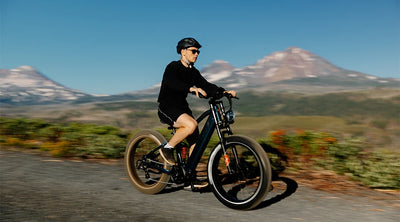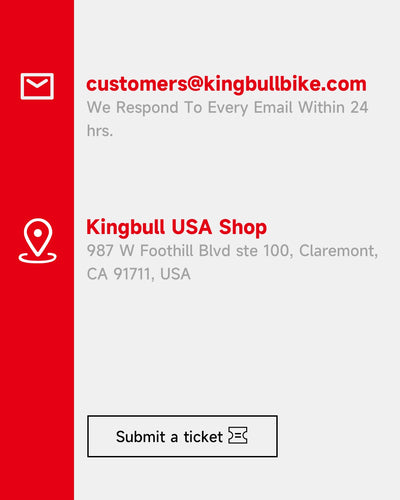Explore News
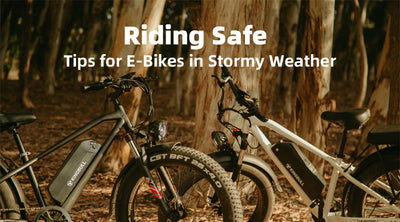
Maintenance
Riding Through the Storm: Ensuring Your E - Bike's Resilience in Inclement Weather
Hey there, fellow e-bike enthusiasts! There's no denying the sheer exhilaration and freedom that our electric bikes bring to our daily lives. However, we all know that Mother Nature can be quite the unpredictable force. Whether it's an unforeseen torrential downpour, a snow-covered landscape, or those bone-chilling winter days, adverse weather conditions can pose significant challenges to our beloved rides. But fear not! With a few well-thought-out strategies and a bit of proactive care, you can safeguard your e-bike and ensure it remains in prime condition, regardless of what the elements throw at you.
1. Shielding the Sensitive Electronics
E-bikes house a variety of delicate electronic components, with the battery and display being particularly vulnerable. These components are the lifeblood of your e-bike, and protecting them is of utmost importance. Investing in high-quality waterproof covers is a fantastic first step. These covers are specifically designed to provide a snug and secure fit, effectively repelling rain and snow. In a pinch, heavy-duty plastic bags can also serve as a makeshift solution. Just make sure to wrap them tightly around the battery and display, sealing off any potential entry points for moisture.
When it comes to storage, always prioritize keeping your e-bike indoors. If that's not possible, look for a well-sheltered area that offers protection from the elements. A covered porch, a garage, or a shed can all be great alternatives. By doing so, you're not only shielding your e-bike from direct exposure to rain and snow but also reducing the risk of damage from wind-blown debris.
2. Maintaining Chain Integrity
The chain of your e-bike is a crucial component that often bears the brunt of bad weather. Rain, snow, and slush can quickly wash away the essential lubricant that keeps the chain running smoothly. Without proper lubrication, the chain becomes prone to rust and accelerated wear, which can ultimately lead to costly repairs or even replacement.
To combat this, it's essential to use a high-quality, water-resistant bike lube on a regular basis. Make it a habit to apply the lube before and after rides, especially if you've been out in wet conditions. After riding in the rain or snow, take a few minutes to thoroughly wipe down the chain with a clean cloth. This helps to remove any dirt, grime, or moisture that may have accumulated. Once the chain is dry, reapply the lube, ensuring that every link is evenly coated. This simple routine will go a long way in extending the lifespan of your chain and maintaining optimal performance.
3. Prioritizing Tire Traction for Safety
In wet, icy, or slippery conditions, the traction of your tires can mean the difference between a safe ride and a dangerous accident. As such, it's vital to pay close attention to the condition of your tires. Start by regularly checking the tread depth. Tires with sufficient tread provide better grip on the road surface, allowing you to maintain control of your e - bike. If you notice that the tread is worn down, it's time to consider replacing the tires.
For an added boost in traction, you can experiment with adjusting the tire pressure. And here's a detailed guide on tire pressure for Kingbull electric bike tires:
Soft Terrain (such as sand or snow): Keep the pressure between 18 and 20 PSI. This lower pressure allows the tires to have a larger contact area with the soft surface, ensuring better traction and comfort. You'll feel more stable when riding on sand dunes or through a snowy path.
Daily City Riding or Paved Roads: Maintain the pressure between 20 and 25 PSI. At this level, the rolling resistance is reduced, which in turn improves the efficiency of your ride. You'll find that your e-bike glides more smoothly on the flat, hard surfaces of city streets.
Heavy Loads or Long-Distance Riding: Keep the pressure between 25 and 30 PSI. Higher pressure in these situations ensures tire stability and durability. Whether you're carrying a heavy cargo or embarking on a long journey, the tires can better withstand the continuous stress.
Special Consideration for Rainy Conditions
When it's raining, proper tire pressure adjustment becomes even more critical.
Lower the tire pressure to increase traction: On slippery wet roads, reducing the tire pressure can increase the contact area between the tires and the ground, enhancing traction and reducing the risk of skidding. However, it's important not to overdo it, as excessive reduction will increase rolling resistance, hampering riding efficiency and potentially damaging the tires.
Refer to the suggestions on the tire sidewall: Each tire's sidewall indicates the recommended tire pressure range, which serves as the fundamental reference.
Adjust according to the actual situation: The intensity of the rain, road slipperiness, and personal riding habits all factor into the optimal tire pressure choice.
Slight pressure reduction: In light rain or when the road surface is slightly slippery, decrease the tire pressure by about 5 - 10%.
Greater pressure reduction: In heavy rain or on extremely slippery roads, you can increase the reduction, but ensure the tires don't deform excessively.
Maintain balance: Keep the front and rear tire pressures balanced to prevent uneven traction.
Precautions:
Avoid excessive pressure reduction: This can lead to increased rolling resistance, reducing your e-bike's battery range and raising the risk of a tire blowout.
Check the tire pressure regularly: After riding in the rain, promptly check the tire pressure to ensure it's within the normal range.
Pay attention to the tire tread pattern: Alongside tire pressure, the tread pattern impacts traction. Opt for tires with good water-drainage capabilities to enhance safety during rainy rides.
4. Secure Storage and Theft Prevention
When your e-bike isn't in use, proper storage is key. Storing it indoors in a dry, climate- controlled area is the best way to protect it from the elements and potential damage. But even when stored indoors, it's important not to let your guard down when it comes to security. Always lock your e-bike, whether it's in your garage, basement, or apartment. A high-quality bike lock can deter would-be thieves and give you peace of mind.
Click here for more tips on how to prevent e-bike theft.
If you have no choice but to store your e-bike outdoors, invest in a durable, weather- resistant bike cover. These covers are designed to withstand harsh weather conditions, protecting your e-bike from rain, snow, sun, and wind. Make sure to choose a cover that fits your e-bike snugly and has additional features like UV protection and reinforced seams for added durability.
5. Cold-Weather Battery Care
Cold weather can have a significant impact on the performance of your e-bike's battery. As the temperature drops, the chemical reactions within the battery slow down, resulting in reduced power output and shorter battery life. To mitigate this, it's crucial to take extra care of your battery during the colder months.
For more tips on protecting your battery in cold weather, click here.
Whenever possible, store your battery indoors in a warm environment. If you're planning to go for a ride in cold weather, bring the battery inside a few hours before you leave. This allows the battery to warm up to a more optimal temperature, which can significantly improve its performance.
6. Regular Cleaning and Thorough Inspections
After braving the elements on your e-bike, it's essential to give it a thorough cleaning. Bad weather often brings with it a host of dirt, salt, and debris that can accumulate on your bike and cause damage over time. Salt, in particular, is highly corrosive and can quickly eat away at metal parts.
When it comes to cleaning, we strongly caution against using a pressure washer on e-bikes. The powerful water jet from a pressure washer not only poses a risk of damaging the electrical connections but can also force water into sensitive areas, such as the motor housing, battery compartment, or other vulnerable parts, potentially causing malfunctions.
Instead, opt for a gentle bike cleaner and a soft brush. Use them to meticulously remove all the grime from your e-bike, with special attention given to hard to-reach areas like the chain, gears, and brakes.
Once your e-bike is clean, conduct a detailed inspection. Check the brakes to ensure they're functioning properly. Test the cables for any signs of fraying or corrosion. Examine the tires for any cuts, punctures, or uneven wear. By catching these issues early on, you can prevent them from turning into more serious problems down the line. Make regular maintenance checks a part of your routine, and your e-bike will continue to serve you well for years to come.
Pro Tips
Consider using a waterproof spray on connectors and exposed metal parts. This provides an extra layer of protection against moisture and corrosion, helping to keep your e-bike's electrical system and metal components in top shape.
When storing your e-bike for an extended period, such as during the off-season, it's a good idea to remove the battery and store it separately in a temperature-controlled area. This helps to prevent the battery from discharging and extends its overall lifespan.
Stay Safe Out There!
Riding in bad weather requires extra caution. Slow down and give yourself plenty of time to react to any unexpected situations. Wear appropriate gear to keep yourself safe and comfortable. A well-fitting helmet is a must, along with a waterproof rain jacket and gloves to keep you dry and warm.
Before you head out, take a few minutes to check the weather forecast. If the conditions are too extreme, it may be best to postpone your ride. Remember, your safety should always be your top priority.
By following these comprehensive tips, you can not only protect your e-bike from the ravages of bad weather but also continue to enjoy the thrill of riding, no matter what Mother Nature has in store. So gear up, take care of your e-bike, and hit the road with confidence, rain or shine!
Read more
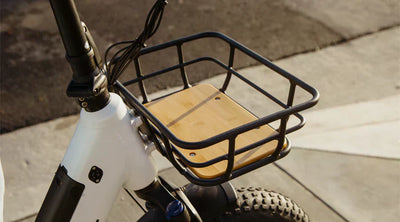
Maintenance
How to Install a Front Basket on Your Bike – A Step-by-Step Guide
Adding a front basket to your bike is a great way to increase its practicality, whether you’re commuting, running errands, or just enjoying a leisurely ride. A well-installed basket provides convenient storage without compromising the bike’s stability. In this guide, we’ll walk you through the step-by-step process of installing a front basket, including repositioning the front light for a seamless fit.
Step 1: Remove the Front Light
Remove the original front light to make room for the front basket installation.
Step 2: Attach the Front Basket
Align the holes of the front basket with the reserved mounting holes on the bike frame, then secure it using washers and screws.
Step 3: Install the Bracket
Install the new bracket in the designated slot at the front of the basket. Pay attention to the bracket's installation direction.
Step 4: Reinstall the Front Light
Remove the original front light bracket and install the front light onto the new bracket. After installation, reconnect the wiring to complete the setup.
Final Thoughts
With your front basket properly installed, your bike is now more functional and stylish! Whether you're carrying groceries, a backpack, or other essentials, this upgrade will make your rides more convenient. Happy cycling!
Read more
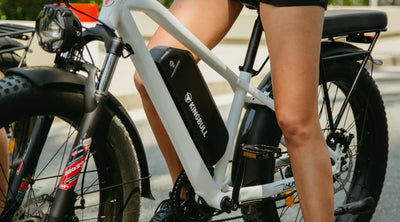
Maintenance
Kingbull Electric Bike Tire Assembly Guide: Ride Safer and More Comfortably!
Hey Kingbull Electric Bike Riders! We're so stoked you're part of the Kingbull family! Your wheels are your connection to the road, so keeping them in top shape is key for a safe and awesome ride. That's why we've put together this guide to walk you through tire assembly and maintenance. Let's keep those wheels turning!
Why Choose Kingbull Electric Bikes?
Kingbull is committed to providing users with high-quality, high-performance electric bikes. Our e-bikes are not only stylish and performant, but also meticulously crafted in every detail. For example, our wheels:
Use Schrader Valves: Schrader valves are sturdy, durable, and provide a good seal, making inflation easier and preventing air leakage.
Offer a Variety of Specifications: We offer a wide range of sizes and specifications including 20-inch and 26-inch CST fat tires to meet different models and riding needs, ensuring you can find the best tire for you.
Recommended Tire Pressure: Based on the characteristics of Kingbull electric bikes, we recommend a tire pressure range of 25-30 psi. This ensures both riding comfort and tire wear resistance.
Preparation
Before starting the assembly, make sure you have the following tools and materials ready:
New tires (make sure they match your Kingbull electric bike model)
Wheel rims
Hand pump or air compressor
Wrench (choose the size according to your e-bike's wheel hub nuts)
Jack (if you need to lift the e-bike)
Tire levers (may be needed to remove old tires)
Gloves (optional, to keep your hands clean)
Assembly Steps
1. Removing Old Tire (if replacing)
If you are replacing tire, you first need to remove the wheel.
Use a wrench to loosen the wheel hub nuts.
If you need to lift the e-bike, you can use a jack.
Carefully remove the old tire from the wheel.
2. Inspecting the Rims
Check the Wheel for damage or deformation.
Clean the Wheel to ensure there is no debris.
3. Installing New Tire
Insert the valve stem of the new tire into the valve hole of the Wheel. Most Kingbull electric bikes use Schrader valves, so please pay attention to the distinction.
Attach the tire bead to the wheel hub.
Make sure the tire is fully seated on the Wheel.
4. Inflating
Use a hand pump or air compressor to inflate the tire to the appropriate pressure. For Kingbull electric bikes, we recommend inflating the tires to 25-30 psi. You can press the tire with your hand to feel the inflation, the tire should not be easily deformed by pressing.
Be careful not to overinflate, as this may cause the tire to burst.
The tire pressure value can usually be found on the tire sidewall.
5. Installing the Wheel
Install the wheel on the e-bike.
Use a wrench to tighten the wheel hub nuts.
Make sure the wheel is securely installed.
Tire Maintenance and Care for Your Kingbull E-Bike
Proper assembly is key, but regular maintenance and care are also essential to maximize the lifespan of your tires and ensure your safety while riding. Here are some helpful tips:
1.Regular Tire Pressure Checks
Maintaining the correct tire pressure is crucial for optimal tire performance and safety. We recommend checking your tire pressure regularly and adjusting it as needed within the recommended range for Kingbull e-bikes (25-30 psi).
2.Inspect for Wear and Tear
Periodically examine your tires for any signs of cracking, cuts, or uneven wear. If you notice significant wear, it's time for a tire replacement.
3.Avoid Impacts and Squeezes
While riding, try your best to avoid hitting or squeezing your tires against hard objects, as this can cause damage.
4.Keep Your Tires Clean
Regularly clean your tires to remove dirt, debris, and other foreign objects from the tire surface. This helps maintain tire cleanliness and prolong their lifespan.
Troubleshooting wheel Wobbles
Even with regular maintenance, you might sometimes experience a wobbly wheel. wheel wobbles are a common issue with e-bikes, and here are some of the usual suspects:
Low Tire Pressure: Underinflated tires can cause them to deform, leading to a wobble. The fix is simple – pump up your tires to the correct pressure using a bike pump or air compressor.
Improper Assembly (Inner Tube and Rim Mismatch): If the inner tube and tire aren't seated correctly on the rim, it can throw off the balance and cause a wobble. You'll need to take the tire off and reinstall everything, making sure it's all lined up properly.
Loose Hub Axle: A loose hub axle can cause the whole wheel to wobble. Grab your wrench and tighten that axle!
Uneven Tire Wear: If your tire is worn down unevenly, it can cause the center of gravity to shift, resulting in a wobble. Time for a new tire!
Damaged Rim: A bent or damaged rim is a common cause of tire wobbles. If this is the case, you'll need to replace the rim.
If your Kingbull e-bike has a wobbly wheel, it's super important to figure out why and get it fixed before you hit the road. Your safety is what matters most!
Kingbull Support
If you have any questions about installing your tires or run into any issues, don't hesitate to reach out to Kingbull customer support. We're here to help!
Video Tutorial
Want to see it in action? Check out our video tutorial for a step-by-step walkthrough:
We hope this guide helps you keep your Kingbull e-bike rolling smoothly and safely. Happy riding!
Read more
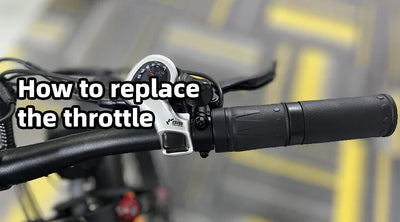
Maintenance
How to Replace the Throttle
Replacing the throttle might sound like a complicated task, but with the right steps, it’s a manageable DIY project that can save you time and money. Whether your throttle is unresponsive, sticking, or completely malfunctioning, replacing it can restore your vehicle’s performance and ensure a smoother driving experience. In this guide, we’ll walk you through the process step by step so you can get back on the road with confidence.
Specific Steps
Step 1:Loosen the Handlebar Grip
Use the provided tool to turn the handlebar grip screw counterclockwise until it loosens.
Step 2: Remove the Old Throttle and Install the New One
Once the grip is loose, carefully disconnect the throttle cable and remove the grip. Next, install the new throttle, reconnect the cable securely, and tighten the screw by turning it clockwise.
Conclusion
Replacing your throttle isn’t as difficult as it may seem. By following the correct steps, you can successfully complete the job and improve your vehicle’s performance. Always double-check your work, ensure all components are securely in place, and test the throttle before driving. If you’re unsure about any step or run into issues, don’t hesitate to consult a professional mechanic. We hope this guide helps—happy driving!
Read more
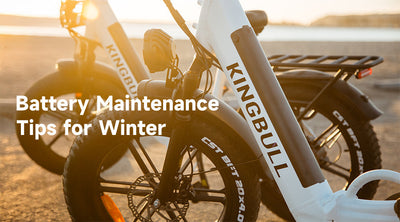
MaintenanceTips & Cycling Knowledge
Keep Your Electric Bike Powered Up This Winter: Battery Care Tips You Need
Winter can be tough on electric bike batteries, but with the right care, you can keep your bike running smoothly and extend the battery’s lifespan. Here’s a handy guide to help you navigate cold-weather battery maintenance so you can enjoy riding even in the chillier months.
1. How Cold Weather Affects Your Battery
Lithium-ion batteries are sensitive to temperature changes. In cold conditions, you may notice:
Reduced Range: Low temperatures temporarily lower battery capacity, which can shorten your ride distance.
Slower Charging: Charging efficiency drops in the cold, making the process take longer.
Risk of Over-Discharge: Repeated low-battery usage in cold weather can lead to faster battery degradation.
Understanding these effects is the first step to keeping your battery healthy during winter.
2. Tips for Battery Storage and Usage in Winter
Keep It Warm:
Store your battery indoors at room temperature (60°F - 77°F) when not in use.
Use an insulated battery cover to protect it if you’re riding in freezing conditions.
Charge After Each Ride:
Charge your battery promptly after riding, but let it warm up to room temperature before plugging it in if it’s been out in the cold.
Avoid Deep Discharge:
Keep the battery level above 30% during winter to prevent damage caused by over-discharge in cold weather.
3. Charging Your Battery in Cold Weather
Charge Indoors:
Always charge your battery in a warmer environment (above 50°F) to ensure proper charging performance.
Use the Right Charger:
Stick to the manufacturer’s recommended charger to avoid compatibility issues and maintain battery health.
Don’t Overcharge:
While modern batteries usually stop charging when full, unplug it after charging to prevent unnecessary stress on the battery.
4. Regular Cleaning and Inspections
Clean the Battery Contacts:Cold, wet conditions can lead to corrosion. Use a dry cloth or appropriate cleaner to wipe down the battery’s metal contacts regularly.
Inspect the Battery Casing:Check for cracks or damage to ensure moisture doesn’t seep in, which could harm the battery.
5. Maximizing Battery Range in Winter
Use Eco Mode:Riding in a lower power mode helps conserve battery life and extend your range.
Lighten the Load:Reducing the weight on your bike can help the battery work more efficiently.
Warm the Battery Before Riding:If the battery has been in a cold place, bring it indoors to warm up to room temperature before attaching it to the bike.
6. Storing Your Battery During the Off-Season
Charge It Just Right:For long-term storage, keep the battery at 40%-60% charge. Don’t store it fully charged or completely drained.
Store in the Right Place:Choose a dry, temperature-controlled spot (between 32°F and 95°F) to keep your battery safe.
7. Consider a Backup Battery
If you frequently ride in freezing temperatures or take long trips, having a fully charged spare battery can give you peace of mind.
Wrap-Up
Winter weather doesn’t have to slow you down. With proper battery care and maintenance, you can enjoy smooth, worry-free rides even in the coldest months. Taking a little extra time to protect your battery will help extend its life and ensure your bike performs its best all year round.
Ride smart, stay warm, and keep the adventures going this winter!
Read more
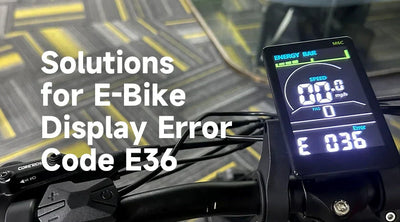
MaintenanceTips & Cycling Knowledge
E-Bike Display Error Codes: Solutions for Error Code E36
The display screen of an electric bicycle (e-bike) is not only an essential source of information during a ride but also shows key data such as speed, battery level, mileage, and riding mode. This information helps riders better understand the status of their bike, ensuring a smooth and safe riding experience. However, beyond these functions, the display screen has another crucial role: when a fault occurs, it can display specific error codes that inform the rider about potential issues with the e-bike.
Different error codes correspond to various types of faults, which may involve the motor, controller, braking system, or sensors, among other components. These error codes function as the e-bike’s “diagnostic tool,” helping riders quickly identify the root cause of the problem. Therefore, when an error code appears on the e-bike’s display, the rider must use the code’s meaning to conduct a thorough inspection of the bike and take appropriate measures to resolve the issue.
Understanding Error Code E36
Error code E36 typically indicates an issue with the electric bike's motor or that the controller has detected a voltage beyond the safe operating range. This can be caused by several factors, including:
Loose or Damaged Cables: The motor cables under the frame may be loose, broken or have poor contact, affecting power output.
Display Malfunction: The bike's display could be faulty, misinterpreting or incorrectly communicating voltage levels to the controller.
Controller Fault: The voltage detection circuit within the controller may be malfunctioning, preventing accurate transmission of voltage data, or leading to an incorrect detection of over/under-voltage conditions.
Motor Malfunction: The motor may be damaged, resulting in improper function, and might need replacement.
How to Respond to Error Code Alerts
When an error code appears on your e-bike’s display, there’s no need to panic. Most issues can be addressed through basic checks and troubleshooting. Here are some general steps to follow:
1. Check Connections and Plugs
Many fault codes stem from loose connections or damaged wires. Carefully inspect the connections of various components on your electric bike, paying special attention to the motor cables, particularly when an E36 code appears, as this is often caused by issues with the motor or motor control circuit. Check for any looseness, wear, or breakage in the motor wires, especially at the connection point under the frame.
Corrosion on Plugs: Due to moisture or dirt, plugs may corrode over time. Regularly clean the plugs and ensure they are dry.
2. Reset the Display
Sometimes, the bike’s display may need to be reset to clear temporary faults. Follow these steps to reset the display:
Enter Settings Mode: Press and hold the “+” and “-” buttons simultaneously to access the display settings menu.
Select P16 Parameter: Press the power button to navigate to the P16 parameter setting.
Reset the Display: In the P16 parameter screen, press and hold the “-” button for about five seconds to reset the display.
Save Settings: Once reset, press and hold the “+” and “-” buttons again to exit settings, then restart the display to check if the fault has been cleared.
3. Check the Controller
If the problem persists after resetting the display and inspecting the cables, it may be related to a fault in the controller. Verify that the connections between the controller and other components (like the motor and sensors) are secure and that the controller itself is functioning correctly.
For Literider models, the controller is located inside the fold of the frame. In Voyager, Rover, Hunter, and Discover models, the controller is situated near the pedals and crank. You’ll need to remove the black cover to check the controller. You can refer to these videos for guidance on how to perform this check.
4. Contact Professional Support
If you are unsure how to proceed or if the issue remains unresolved after the above steps, please contact our customer service at customers@kingbullbike.com.
To expedite the resolution of your issue, please include your order number along with any relevant images or videos of the problem. Our customer service team will respond within 48 hours with more specialized technical support.
If you encounter other fault codes E34 or E37, please click here to view the solution steps.
Conclusion
Troubleshooting E-bike error code E36 faults often involves checking connections, resetting the display, and inspecting the controller. By following these steps, common issues can be resolved. However, if problems persist, reaching out to professional support with detailed information will ensure timely assistance. Remember, regular maintenance is key to keeping your e-bike running smoothly and preventing future faults.
Read more




